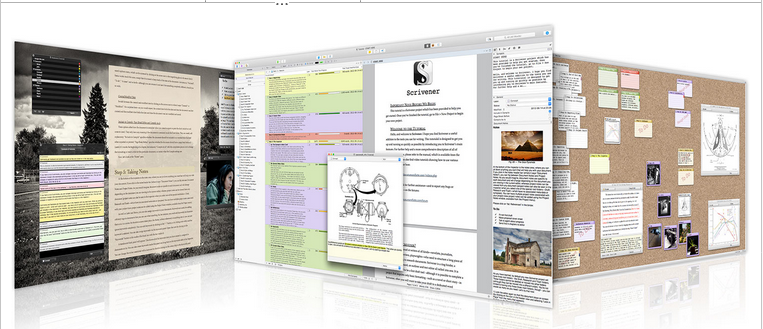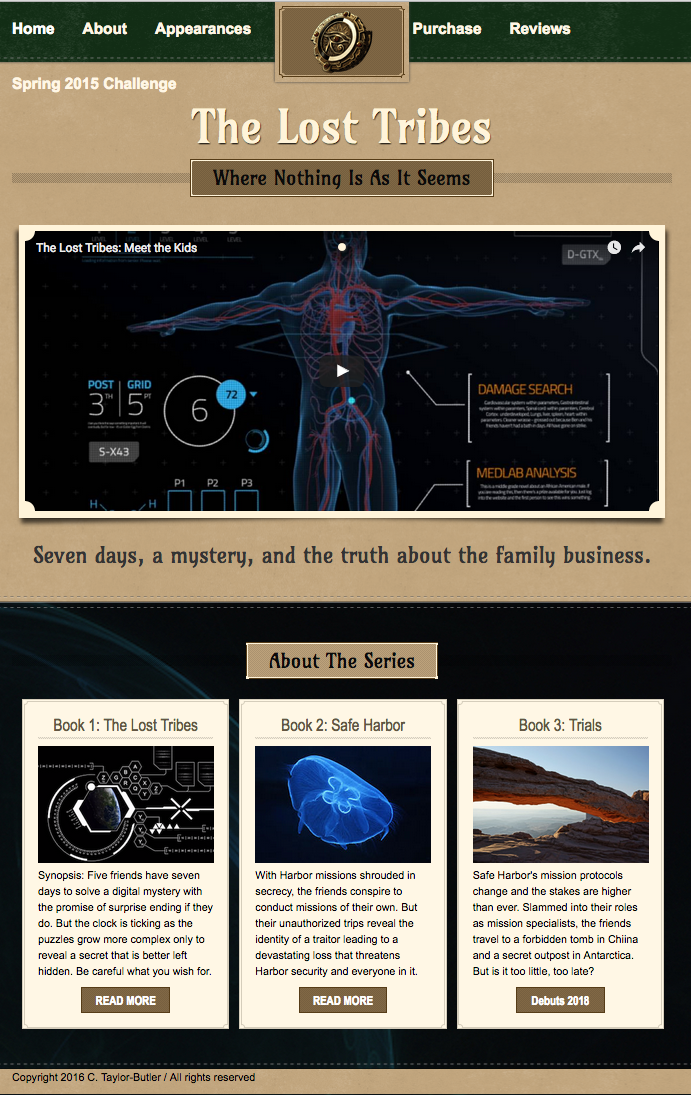As a result, new writers sit down at a blank screen or white paper and enthusiastically craft a new world or story they want to present to the world. You take classes on writing and pacing and plotting. You go to conferences and cling to every word of an editor or agent in the hopes of finding the holy grail of publishing: THE contract!
But there’s another side of publishing that many don’t see until you’re on the other side of the curtain. Writing is a business. And you will bear the weight of it full force. So get ready and get prepared:
1. Your office.
I’m lucky enough to have an extra bedroom which I turned into a fully functioning, dedicated space for writing. Some of my friends have sheds in their backyards. They’re not fancy, but they ‘re sanctuaries for writing. Other friends have carved out a nook in the kitchen, or a closet or someplace where they can feel that the space is reserved for allowing them to immerse in their manuscripts.
‘re sanctuaries for writing. Other friends have carved out a nook in the kitchen, or a closet or someplace where they can feel that the space is reserved for allowing them to immerse in their manuscripts.
Find your space and claim it. Writing is work. Create an office even if it’s only a 2 foot by 4 foot table in the corner of a room. Pinterest is filled with people who created innovative solutions.
2. Your equipment.
You need a good working computer. It doesn’t have to be new. Here in Kansas City, for example, there’s a wonderful nonprofit called Surplus Exchange which refurbishes donated computers from local companies and sells them inexpensively. You also need a reliable printer. You don’t always want to read your work on the screen. You’ll sometimes have to print and send hard copies. You can unlock a different part of your brain if you occasionally print your work out to read and revise. Laser printers can be more cost effective than inkjet. They’re also faster. But regardless of what you choose, writers should acquire tools of their trade. I have two 4-color commercial laser printers (one regular, one wide format) and a fax machine. And yes, I still use all three. Most sane people will only need one printer.
I also have a dedicated office phone line with its own answering machine. But most people don’t need to go that far. I find it convenient not to mix business messages with a family machine where someone else will play the message and forget to tell me (like the time I missed a publishing inquiry because the message wasn’t relayed to me for two days).
You should have a bookcase (or two, or three) filled with books on writing craft and books by authors you admire. You can’t write if you’re not reading. It’s a process. Load up on nutritious calories.
YOU MUST have a back-up hard drive. MUST. They’re less than a hundred dollars. I was on deadline and my computer’s hard-drive died. I was dead in the water. But because I set my computer to back-up to an external drive each night I had a copy of all of my work. Just make sure you frequently save the files while working so the back-up drives have the most current versions.
Also back up your manuscript on a flash drive in case the external back-up drive laughs at you and dies days later. 🙂
3. Software for writing
If you have a tiny budget and if you can’t find a computer that already has writing software loaded on it, download: Open Office, which can read and write MS docs, and Scrivener. Mac people can use Pages (iWork) and Scrivener.
https://www.openoffice.org/product/index.html
I write almost exclusively in Scrivener, now. I can export an MS word file for my editor. I edit files in Pages (which is a Mac program because both my publisher and their book designer can open).
http://www.literatureandlatte.com/scrivener.php
Scrivener has been life changing and a lot of professional authors are switching to it. The cost is low but it’s like having a Swiss Army knife, especially when writing a novel with a lot of characters and moving parts. There is a short learning curve, but once you get the hang of it you probably won’t go back to the old way of drafting your work. And when you quit it automatically creates archive back-ups for emergencies.

4. Software other:
I write full time. Which means as a business owner I have other responsibilities. I have to create a website and blog. Book trailers. Book marks. I could hire out many of those things but writers are business people with limited budgets. I’m lucky enough to have two art kids in my family. But when they’re too busy with classes to do my book trailers, etc,and when threats of withholding tuition doesn’t sway them, I have to learn how to do them myself. As a result, my office software includes video editing software, Adobe Master Collection (Photoshop, Illustrator, Dreamweaver, After Effects, etc…) When I needed a 72″ tall banner I made one myself in the correct resolution for Fedex/Kinkos to print and load in a stand. I had no choice. A good friend had her own banner made by someone at Fedex. We were appearing at the same event. So i made one too. And we both sold out of books because you could see our banners for miles away in that convention hall. So there are multiple ways to work through this if you’re starting. But in this business, tools are important. Borrowing ideas from colleagues is also effective if you are stuck.
If this sounds overwhelming, find a student at a local college and pay them for help. Art students already have the software on their computers and can design things for you. Pay them. Be fair. They have to eat too.
5. Furniture
Get a comfortable chair. Sure, you can start with a dining room chair, but eventually, find a sale, or a surplus place and get a good chair that lets you change height and has lumbar support because your bottom will be sitting in that chair for a long time. Find a table or desk that you don’t have to share and that you can dedicate to your business of writing. Cats and dogs won’t respect the space, but hopefully your family or significant other will. Get a file cabinet. Yes – writing can be electronic, but contracts are hard copies. You will want to file those and receipts for tax purposes.
6. Education
While the industry loves to tell you stories of first-book authors who go into auction for a book deal, that’s not the norm. That’s the 0.00000001% of the industry. The rest is a hustle. So take classes. Could be an MFA, could be a workshop and a creative writing class at the local college. But there is no free lunch here. Take class. Even the most experienced authors know that writing is like ballet. You maintain muscle memory by investing in continuous education. Ask your doctor how many CME (Continuing Medical Education) credits they must take to stay board certified. Plan accordingly to accumulate writing CME’s even though we don’t call them that and no one is keeping track of what you do.
Writing doesn’t pay like medicine (you’ve been warned), but it requires the same discipline.
7. Platform
Here’s where most authors get stopped cold. Creating a market. I have gotten three invitations to speak in the last week that ended with, “While we can not cover your travel expenses or offer an honorarium, we find most authors relish the opportunity to meet a new audience. And some publishers often cover the cost.”
Here’s a newsflash. That’s a myth. Most authors get NO marketing subsidy from their publishers. None. Nada. Many are printing their own bookmarks and paying someone to design it. They’re paying for their own travel. They get 5-10 books from the publisher as part of the contract and have to pay to buy additional copies at an author’s discount (40%) off. Those books are exempt from royalty payments even though bookstores and Amazon buy at the same discount and you DO get a royalty from those sales. So marketing is on you. YOU and not the publisher will set up a website, and Instagram, a professional Facebook page and a Twitter. YOU will create outreach to schools and libraries after the initial launch. YOU will need to engage with the audience and keep their interests. You’ll have to talk to local librarians and bookstores.
Why bring this last part up?
Authors make the process look easy. We often employ smoke and mirrors to make the process seem more glamorous than it is. Workshops and classes cover the craft of writing but not the business. I’ve met a lot of people who have stars in their eyes about the prospect of being published and are wholly unprepared for the “business” black hole that follows. A business part whose expense and time commitment can have the potential to swamp the writing/joy part. The reality is both frustrating for new authors (and old ones), but equally frustrating for editors and agents who found joy in acquiring a work only to find out that the author is not marketing, or has assumed the publisher is going to take care of it.
True story, I’ve encountered people who ask how soon before they can get money after they send in an unsolicited manuscript. Book as a path to a vacation villa in Turks and Caicos is a myth.
8. Register a URL. NOW!
 I used a free Earthlink website for years. By the time I’d published 10 or so books I got the courage to register my name: www.ChristineTaylorButler.com only to find that someone had bought it and wanted me to pay for it. I had to register a complaint with ICANN to get it back. I made the case I had been operating commercially for years and the owner didn’t have the rights to a site with my unique name. I got it back with no payment owed to the person. But don’t wait. As soon as my publisher acquired The Lost Tribes, I registered www.TheLostTribesSeries.com and several iterations.
I used a free Earthlink website for years. By the time I’d published 10 or so books I got the courage to register my name: www.ChristineTaylorButler.com only to find that someone had bought it and wanted me to pay for it. I had to register a complaint with ICANN to get it back. I made the case I had been operating commercially for years and the owner didn’t have the rights to a site with my unique name. I got it back with no payment owed to the person. But don’t wait. As soon as my publisher acquired The Lost Tribes, I registered www.TheLostTribesSeries.com and several iterations.
Start engaging on social media. No time for a website, then use a wordpress blog as the starting point and point your domain name at it. Warning: DO NOT hard sell your books on social media. It’s obnoxious. There’s a bazillion people doing the same thing because some “how to” blog told them it would work. It doesn’t. Make personal connections. Enjoy and discuss the works of other people. The latter will net you more long term good will. Coming on to say “I’m writing a book” or “buy my book on Amazon” will result in psychic daggers being aimed in your direction. Notice how few “likes” those posts get.
9. Organize your finances.
You got an advance? Good news. Now that pesky bad news. Don’t spend it on Turks and Caicos. Invest it back in your career. Remember the other info above? That’s where it goes. Get an envelope and throw every receipt in it. The printer and the printer paper, the Sharpies, the office phone, the internet costs, the website, the computer costs, the software, the classes, the post-it notes, the airfare to conference, the hotel, the Uber, taxi or the shuttle. It’s all deductible when you publish. You’d be surprised how the costs add up.
None of the above is reimbursed by your publisher. You are the business owner/writer. These are some of the costs.
You will be responsible for your own taxes. You’ll pay both the employer and the employee portion of Social Security and Medicare. April 15th is the National Day of Mourning for self-employed, full-time authors. The government still expects their fair share even though they didn’t rep you or critique your manuscript.
10. Getting paid.

There are two general options if you sell work to a commercial publisher:
The first is selling to a publisher with a royalty based contract. Even if the contract is for what seems like a large amount, you won’t get it all up front. Many contracts call for a third on contract signing, a third when the manuscript is turned in, and a third when the book is ready to be printed. That can be 6 months from start to finish in the case of my first book, or a year or more in the case of a more complicated project. Even longer if you write a picture book and the illustrator is famous and booked for several years.
You won’t get any additional money until the publisher has sold enough books for your royalty to cover the money you were paid in advance. And afterwards the payments will likely come six months in arrears. So the statement for January through June may not come until December or January. If you have an agent they will need time to process their client’s statements and deduct their commission.
So you will be paid twice a year and the amount is not predictable. Budget appropriately. It may also not include 100% of what you are owed because distributors and publishers keep a reserve in the event that bookstores return unsold books they purchased from the publisher. And here’s another hint, many authors do NOT earn out their advances. So it is likely that your advance will be the sum total of your revenue and earnings in the future will be small. Unless you are marketing your assets off – but we’ve already covered that.
If you take on a book as “work for hire,” you will receive a flat fee. The publisher will own the copyright and all revenue remains with them. Some publishers pay half the flat fee on contract and half on manuscript completion. You’ll have to invoice them. Watch the contract terms carefully. I’m now see ing terms that pay 60-90 days AFTER you send in a contract. That’s a long time to wait for work you completed on time. But – I do a lot of work for hire because the fees are often more than an advance on a similar sized book and I don’t have to worry about waiting years for royalties. I have paid a lot of school tuition for the girls by working on client books this way.
If you think you can avoid the stress by self-publishing, think again. You still have to do all of the above, plus now you, not a publisher, will pay for a good artist (read my lips, good well trained cover designer, not friend who dabbles), copyeditor, book designer, etc. Yes – that’s on you if you self-publish and you can’t skip that step. There are no shortcuts if you try to bypass commercial publishing’s submission/rejection black hole.
10. Lastly, know your worth.
Why this last one. It’s the whole purpose of this blog entry. The flood of authors coming into the market because they believe the process is “intuitive” is also driving down the fees publishers are willing to pay. I’ve seen significant wage stagnation which makes it hard for writers and artists to sustain a living wage, something that was possible years ago. There are going to be times when it makes sense to turn work down. Reach out to other authors and don’t ask what they are paid, but do ask if the amount you were offered was reasonable. Would you honestly take a job if you know the time commitment meant you were being paid less than a waiter and you don’t get tips to supplement. But the person who is asking you to work for that rate has a salary, medical and a retirement package?
Remember, when in doubt, know your worth, and what it will cost you to sustain the business costs of writing. I’ve seen a lot of really talented authors derailed because their families saw the hard work but didn’t see the “imaginary” riches materialize after the book was published. They didn’t know that book sales build slowly and require investment of time, energy and money to grow an audience. They didn’t know that their favorite authors on Oprah probably started by selling two copies at a book signing or out of the trunk of their car.
It’s a process with an Everest sized hill to climb.
DOES THAT SCARE YOU?
Then let writing be a hobby. Write with joy. Writing is sometimes about the process of crafting words and that’s enough.
NOT SCARED?
Then forewarned is forearmed and welcome to a family that includes those who have crossed the publishing threshold and those still waiting. These professionals know it’s a business and that the investment isn’t guaranteed to pay off, but the journey is worth taking. Editors and agents are also running business. You’re not a client. Upon acquisition, you’re now a business partner with obligations.
Respect for the process is key. Those authors you admire are running a business with financial profit and loss statements, contracts, and negotiations. They’re their own marketing department, sales team, graphic designers and webmasters. The best writers who have not yet published are still doing the same things as those who have. And for those who are serious, sharing means we are all stronger for the process.
Welcome to the journey. May you find joy and blessings along your path.
|
|
Christine Taylor-Butler is the author of more than 80 books for children. Her current passion is her contemporary sci-fi/fantasy The Lost Tribes about five children who learn they play a role in saving the world. When not writing, she is a freelance editor, and community volunteer. She’s also a closet ballroom dancer, artist and personal servant of a cat and tank of fish. You can find her on Twitter: @ChristineTB , Facebook: ChristineTaylorButler.ChildrensAuthor, or www.ChristineTaylorButler.com.
|


Wow, I do the same thing you do–write history and science books for young readers–but you seem to know what you are doing. I’ve just plunged into it without water wings or much in the way of backup. Check my website; joyhakim.com. Next time you’re in Washington D.C. maybe we dan have coffee? Joy Hakim, joyhakim.com